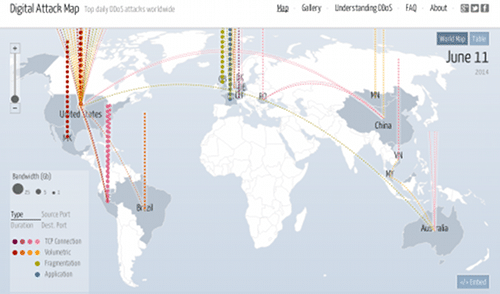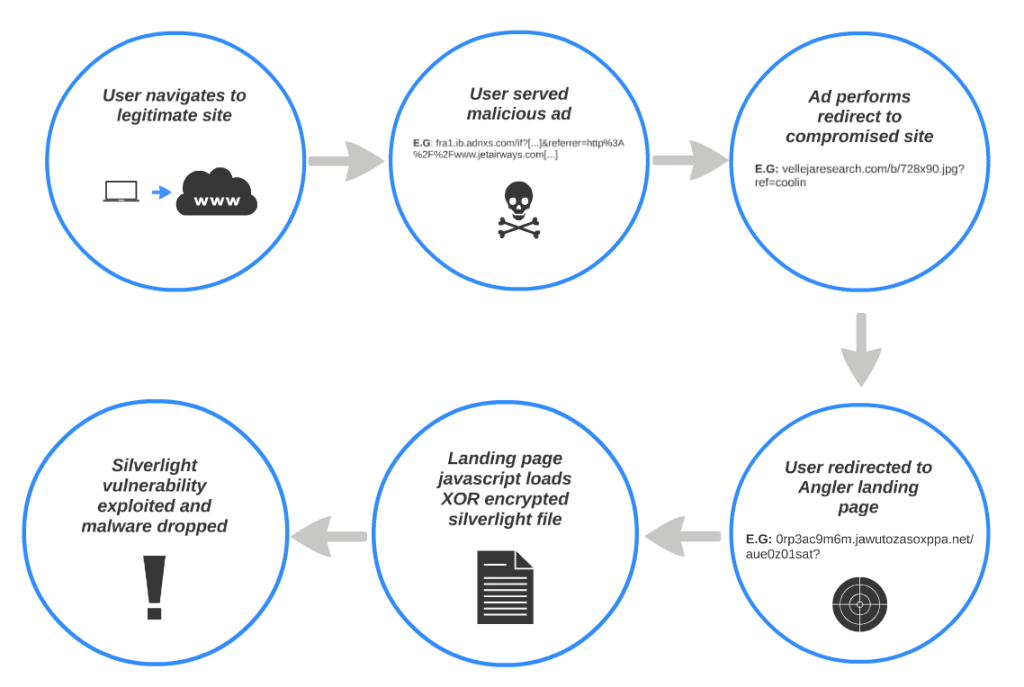We like to throw around the term ‘Advanced Persistent Threat’ casually these days to refer to a whole range of sophisticated and persistent attacks – usually on high value targets. But a blog post today by Cisco Systems makes clear that many otherwise sophisticated attackers do just fine with some pretty low tech and old school methods. Case in point: an attack Cisco is dubbing “String of Paerls-” a series of attacks on companies involved in research and what Cisco calls the ‘industrial manufacturing vertical.’ According to the report, the attacks start with a decidedly old school attack: a Microsoft Word document that includes a malicious Office Macro.”When the victim opens the Word document, an On-Open macro fires, which results in downloadin and executable and launching it on the victim’s machine.” Now, macro-based attacks are truly vintage. They first came to light in the late 1990s, with the Melissa virus – an early and successful […]
domain
For Smart TVs, Malware May Hide In Broadcast Content
Researchers at Columbia University have published research showing how new technology that combines broadband and broadcast content could enable a wide range of traditional and novel cyber attacks on smart televisions and other devices: forcing them to interact with malicious web pages, harvesting credentials or carrying out denial of service attacks. The paper, published in May, explores potential attacks on combined broadcast-broadband devices that use an industry specification called Hybrid Broadcast-Broadband Television (HbbTV). According to the researchers, Yossef Oren and Angelos D. Keromytis, the HbbTV specification combines broadband technologies like HTML and broadcast features in an insecure manner. The vulnerabilities affect a wide range of smart entertainment devices, including smart televisions, in Europe and the United States. “This enables a large-scale exploitation technique with a localized geographical footprint based on radio frequency (RF) injection, which requires a minimal budget and infrastructure and is remarkably difficult to detect,” the researchers write. “The technical complexity and […]
DDoS Attacks Hit Cloud Apps Evernote, Feedly
Large-scale attacks knocked two prominent, web-based services offline late Tuesday, as cyber criminals attempted extort money from the owners of news aggregation site Feedly and the hosted productivity tool Evernote. Feedly – a web site that pulls together news feeds from across the web – remained unreachable early Wednesday, while Evernote was back online. Both companies issued statements confirming that they were the victims of a massive distributed denial of service (DDoS) attack. “We’re actively working to neutralize a denial of service attack. You may experience problems accessing your Evernote while we resolve this,” read a message sent from Evernote’s Twitter account Tuesday evening at around 8:00 PM Eastern Time. And, around 5:00 AM Eastern on Wednesday, Feedly posted a blog entry that reads: “Criminals are attacking feedly (sp) with a distributed denial of service attack (DDoS). The attacker is trying to extort us money to make it stop. We refused to give […]
Cisco: Microsoft Silverlight Exploits Fueling Drive-By Attacks
Cisco Systems is warning that Silverlight exploits are being used in a rash of drive-by-download attacks, many tied to malicious advertising (or ‘malvertising’) campaigns. Writing on Cisco’s blog, Levi Gundert of Cisco’s Threat Research Analysis and Communications (TRAC) team said that Silverlight exploits are the “flavor of the month” and have been added to the popular Angler exploit kit since late April. “Since April 23rd we have observed substantial traffic (often from Malvertising) being driven to Angler instances partially using Silverlight exploits,” Gundert wrote. Attacks leveraging vulnerable instances of Silverlight are actually outstripping attacks against Java and Adobe Flash – the two platforms that have long been the preference of cyber criminal groups and exploit kit authors. Silverlight was the subject of a patch in March, MS04-014, to fix a vulnerability that could allow remote attackers to bypass a security feature. The vulnerability would allow an attacker who controls an attack website to launch specially […]
Tripping Over Heartbleed’s Long Tail
The news about the dreadful Heartbleed OpenSSL vulnerability keeps pumping – almost a month since it first made headlines. But now that other, equally scary security news is stealing the headlines (like the nasty Internet Explorer vulnerability that was announced this week, Heartbleed is taking a back seat. So where do things stand? I think its safe to say that we’re entering a phase that might be considered Heartbleed’s ‘long tail.’ On the one hand: there’s evidence of good news. The Register reported today that data collected by the firm Qualys suggests that almost all websites that were vulnerable to Heartbleed three weeks ago are now patched and no longer vulnerable. The Register’s John Leyden quotes Ristic, the director of engineering at Qualys, putting the percent of web sites, globally, that are still vulnerable to Heartbleed at 1 percent. That’s great news – but I don’t think its the end of the story […]





